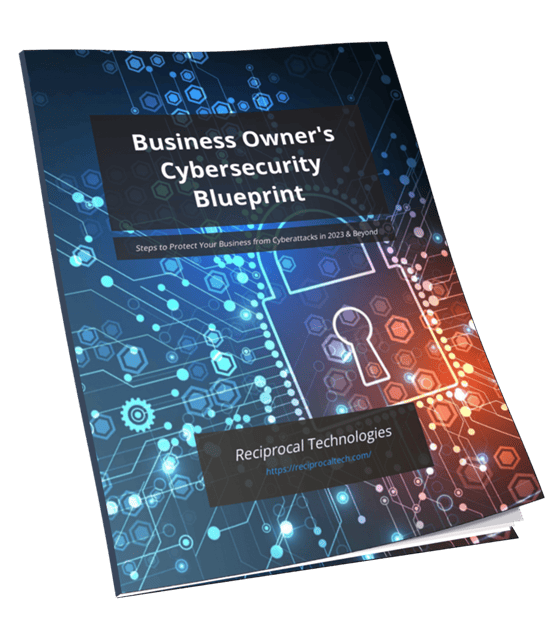Download the Business Owner's Cybersecurity Blueprint

100% Free & Secure - We will never sell your information.

Understanding the role of IT budgeting is essential for driving business success in 2025. An effective IT budget not only allocates resources but also aligns technology initiatives with overarching business objectives. The reliance on technology continues to grow, making it crucial for organizations to invest strategically in IT.
A well-structured budget serves as a blueprint for aligning technology investments with business goals. This proactive approach positions organizations to navigate challenges and seize opportunities.
Developing a successful IT budget that aligns with business objectives requires a strategic approach. Here are key steps to streamline the IT budgeting process:
Conduct thorough consultations with stakeholders to understand their requirements and align IT initiatives with business goals.
Review past budgets to identify trends, areas of overspending, and opportunities for cost reduction.
Rank projects based on their impact on strategic goals, ensuring that essential initiatives receive adequate funding.
Build contingencies into your budget to accommodate unexpected expenses or shifts in priorities.
Avoiding common mistakes is crucial for effective budget management:
Creating an effective IT budget requires careful consideration of various components that directly impact operational efficiency and long-term success. Key elements to include are:
Allocate funds for servers, workstations, networking equipment, and peripherals. These are foundational for supporting daily operations.
Invest in essential software licenses, productivity tools, and specialized applications tailored to your business needs. Keeping software up-to-date ensures functionality and security.
Factor in salaries, benefits, and training for your IT staff. Skilled professionals drive innovation and maintain your technology infrastructure.
Continuous learning is vital in the fast-paced tech landscape. Budgeting for training programs enables employees to stay current with evolving technologies.
The significance of allocating funds for cybersecurity measures cannot be overstated. Protecting sensitive data requires investment in advanced security solutions such as firewalls, intrusion detection systems, and employee training on best practices.
Compliance requirements also demand attention. Ensure that your budget accommodates necessary expenditures to align with regulations like GDPR or HIPAA. This proactive approach mitigates risks associated with non-compliance while safeguarding your organization’s reputation and assets.
Identifying and prioritizing strategic initiatives is essential for aligning technology investments with your organization’s long-term goals. A thorough analysis of business objectives should guide this process. Consider these key steps:
Understand the overarching goals of your organization. Align IT initiatives to support these objectives directly.
Analyze existing technology assets to identify areas needing upgrades or replacements.
Rank projects based on their potential impact on business performance and return on investment (ROI).
Organizations must remain agile, adapting to technological advancements and shifting market demands. Consider the following aspects:
Focusing on strategic planning empowers organizations to make informed decisions regarding technology investments, fostering growth and resilience in an evolving landscape.
Cloud computing offers a game-changing way to approach IT budgeting. It allows organizations to make the most of their resources while still being flexible and able to grow. Here are some key benefits:
Cloud services give businesses the ability to adjust their IT resources based on real-time demand. This means they can easily handle changing workloads and seasonal variations without having to spend a lot of money upfront.
Organizations have the option to easily increase or decrease their infrastructure as needed. This ensures that companies only pay for what they actually use, avoiding unnecessary expenses that come with keeping extra hardware.
By moving to cloud solutions, organizations can reduce their spending on physical servers and maintenance costs. With pay-as-you-go models, they can allocate their funds more effectively, investing in important initiatives instead of fixed expenses.
Integrating services like Microsoft Azure enhances collaboration and productivity while streamlining workflows. With advanced security features inherent in cloud platforms, organizations not only safeguard sensitive data but also comply with regulatory requirements such as HIPAA and GDPR.
These advantages make cloud computing an essential part of a successful IT budget strategy for 2025. It helps organizations manage their finances proactively and operate efficiently.
Allocating sufficient funds for cybersecurity is essential for safeguarding your organization’s data and assets. With the increasing frequency and sophistication of cyber threats, businesses must prioritize robust security measures within their IT budgets.
The importance of cybersecurity in budgeting cannot be overstated. By integrating comprehensive cybersecurity measures into your financial planning, you not only protect your organization from potential threats but also foster trust among customers and stakeholders. This trust is critical for sustaining long-term business success.
Understanding regulatory demands is essential for organizations navigating the complex landscape of compliance. Laws such as GDPR and HIPAA impose strict guidelines that necessitate careful budgeting. Non-compliance can lead to severe financial penalties and damage to reputation.
Key considerations include:
Balancing compliance obligations with cost control requires strategic planning. Consider these approaches:
Investing in employee training is essential for maintaining a competitive edge. Continuous learning programs equip staff with the necessary skills to adapt to rapidly evolving technologies, ensuring that your organization remains agile and innovative.
Conducting a cost-benefit analysis is crucial when justifying investments in employee growth initiatives. Consider the following aspects:
Maintaining control over IT spending levels requires a strategic approach to monitoring and tracking expenses. Implementing effective expense tracking tools is essential for providing visibility into your budget and ensuring alignment with organizational goals.
Utilize specialized budgeting tools that offer real-time tracking of IT expenses. These platforms enable organizations to categorize spending, analyze trends, and generate reports for better decision-making.
Conduct periodic audits of IT projects to assess progress against budgeted amounts. This practice helps identify any discrepancies early, allowing for timely adjustments.
Establish key performance indicators (KPIs) related to IT expenditures. By setting measurable targets, organizations can track the effectiveness of their spending and ensure resources are allocated efficiently.
Use collaboration applications that facilitate communication between finance and IT teams. This enhances transparency regarding project costs and promotes accountability.
Achieving cost optimization in IT requires strategic planning and execution. Identifying practical strategies is essential to balance cost efficiency with service excellence. Consider the following approaches:
A financial blueprint for IT is essential for navigating the complexities of today’s digital landscape. Businesses must adopt a proactive approach to budgeting, which includes:
Proactive IT budget planning involves integrating strategic foresight into financial decisions. This foresight enables organizations to remain agile in an evolving marketplace.
Key components of a successful approach include:
Equipping businesses with the necessary financial resources empowers them to thrive. Emphasizing flexibility within the budget allows organizations to pivot quickly in response to market changes. This proactive stance positions organizations for sustainable success, ultimately translating into higher profitability and competitive advantage.
IT budgeting plays a vital role in driving business success by ensuring that resources are allocated effectively to support strategic initiatives, manage costs, and adapt to the rapidly changing technological landscape.
Key steps include aligning the budget with business objectives, avoiding common pitfalls like underestimating costs, and continuously reviewing and adjusting the budget as necessary to respond to changes in technology and market conditions.
A successful IT budget should factor in hardware, software, personnel costs, training expenses, and importantly, allocate funds for cybersecurity measures and compliance requirements to protect organizational assets.
Organizations can identify and prioritize strategic initiatives that align with long-term goals while considering the impact of digital transformation on future budgets to ensure that investments yield maximum value.
Cloud services provide flexibility, scalability, and potential cost savings, allowing organizations to adjust their IT expenditures based on actual usage rather than fixed costs associated with traditional infrastructure.
To balance compliance obligations with cost control measures, organizations should understand regulatory demands thoroughly and explore innovative strategies that integrate compliance as a service while managing overall budget constraints.
Author’s recent posts
